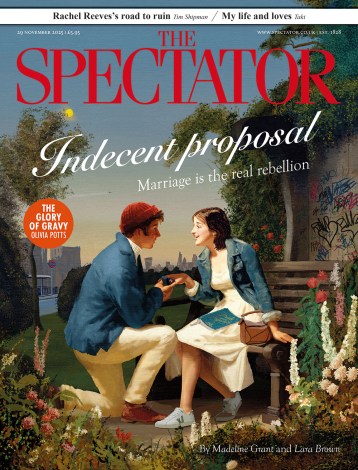If Cambridge colleges were entitled to register protected characteristics, there is no doubt what they would be in the case of King’s College. Announcing the election of Dr Gillian Tett (currently at the FT) as the next Provost, the current Provost of King’s, Mike Proctor, has described the college as ‘this vibrant and forward-looking institution’.
For at least a century its members have taken pride in its left-wing credentials. Whether Ho Chi Minh ever read the telegrams of support sent to him by the King’s College Students’ Union at the height of the Vietnam War is very doubtful, but at least they made the college’s Marxist student leaders feel important. And fifty years ago Edmund Leach, the atheist Provost of King’s, was muttering that King’s College Chapel should be hived off as a separate institution. It makes a dent in this rich college’s finances, but less so now that a gift shop full of gewgaws and a hefty admission fee of £11 (as much as £8.50 for a child) generate income.
So it comes as no great surprise that the lead roof of the Grade I listed chapel is to be graced with solar panels, as a gesture towards the climate crisis. This decision has been vigorously supported by the Diocese of Ely and Cambridge City Council. (The involvement of Ely is odd, since the college is a ‘peculiar’, or enclave, of the see of Lincoln, and as official Visitors of the college past bishops of Lincoln constantly had their patience tried by conflicts between the Provost and the Fellows). Nearly 500 solar panels are to be installed, and the existing lead roof will be melted down. The college, along with Cambridge City Council, sees this as an opportunity to ‘send a message’ about the climate emergency. Yet both Historic England and the city planning officers are opposed, arguing that the appearance of Cambridge’s most important building would be seriously affected, and that the real but small environmental advantages are outweighed by the harm caused to the building. Astonishingly, they were overruled by the city councillors, who seem not to have an interest in aesthetics.
A lead roof already existed by 1512. The present roof is only 150 years old, but it matches the shape of the previous one, to judge from surviving images. It is true that there has been extensive restoration work in the chapel during the last six decades. Visitors will not generally be aware that its pinnacles have been renewed and that many of the armorial sculptures have been re-carved. They are not necessarily looking at real fifteenth-century objects. Nonetheless, work was carried out as faithfully as possible and fulfils the exact meaning of the term ‘restoration’. Much more controversial was the lowering of the floor at the east end, unexpectedly and unpleasantly exposing the graves of ancient Fellows. The area was redesigned in the 1960’s to accommodate Rubens’ painting of the Adoration of the Magi, newly presented to the college and vaingloriously installed as the altar-piece, where it simply looks out of place. Still, there is plenty more to admire: the soaring late Gothic ceiling, the superb stained glass windows created by Flemish craftsmen, the extraordinary wooden choir screen bearing the initials of Henry VIII and Anne Boleyn, not to mention a world-famous chapel choir.
King’s Chapel is easily the most magnificent building in Cambridge or Oxford. Tampering with it is something that needs to be considered with enormous care. One of the characteristics of ecclesiastical buildings is that additions are made over time. These buildings are not museums; they develop organically. Tombs, furnishings, panes of glass are added over the centuries. Changes need to be in harmony with the rest of the building. The west end of Canterbury Cathedral is now decorated by two charming sculptures of the late Queen and Prince Philip. The point is that they are not out of place. They respect the overall character of the facade.
There are many ways to address fears about rising temperatures. One of Cambridge’s youngest colleges, Lucy Cavendish, has opened a splendid new Passivhaus building that has no need of internal heating. Transforming the chapel roof for small gains and the satisfaction of making a gesture ends up doing more harm than good. Solar panels may be forward-looking, in the spirit of King’s, and they may bring some small savings in carbon emissions; but they are out of place in the outer fabric of one of Britain’s most extraordinary buildings. They are, quite simply, another example of virtue-signalling.







Comments